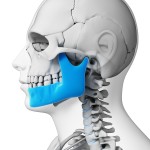
Temporomandibular disorders (TMDs) are a range of conditions affecting the masticatory muscles, the temporomandibular joint (TMJ), and associated structures. Pain in the joint and muscles are common symptoms but a range of associated otologic problems are also reported (earache [otalgia], tinnitus, vertigo, ear fullness and hearing loss/impairment
The aim of this review was to estimate the prevalence of otologic signs and symptoms in adult patients with temporomandibular disorders (TMDs).
Methods
Searches were conducted in the PubMed, LILACS, Scopus, Web of Science, ProQuest, LIVIVO, Google Scholar and OpenGrey databases. Two reviewers independently selected studies, abstracted data and assessed risk of bias using the JBI Critical Appraisal Checklist for Studies Reporting Prevalence Data .
Observational studies in adults over 18 years old) with TMD diagnosed using the research diagnostic criteria for TMD (RDC/TMD) or DC/ TMD reporting otologic signs and symptoms were considered. No language or date restrictions were applied. Prevalence of otologic signs and symptoms presented in adults with TMD were expressed by mean percentage and 95% confidence intervals (95%CI).
Results
- 8 studies were included.
- 1 was considered to be at low risk of bias, 7 at moderate risk.
- Sample sizes varies from 12 – 776.
- The studies demonstrated significant heterogeneity and a random effects meta-analysis found the most frequent symptom associated with TMD in adult is ear fullness
| Symptom | Frequency | Standard deviation | Sample size |
| ear fullness | 74.8 % | 43.02 to 96.25% | 50 |
| otalgia | 55.1 % | 31.78 to 77.30% | 386 |
| tinnitus | 52.1 % | 38.43 to 65.74% | 1293 |
| vertigo | 40.8 % | 11.29 to 74.72% | 374 |
| hearing loss | 38.9 % | 2.83 to 85.46% | 744 |
Conclusions
The prevalence of otologic signs and symptoms in adult patients with TMD is high. The most prevalent otologic symptom in patient adults with TMD is ear fullness.
Comments
The review has searched a good range of databases and has included observational study designs which are appropriate for symptom prevalence studies. However, prospective cohort studies would be the most appropriate and all the 8 included studies are cross-sectional convenience samples, with some being restricted to a single sex, as highlighted by the authors. Consequently, the findings of this review should be interpreted cautiously as an accurate assessment of the prevalence of otologic signs and symptoms in a TMD population requires a well conducted, population-based prospective studies.
Links
Primary paper
Porto De Toledo I, Stefani FM, Porporatti AL, Mezzomo LA, Peres MA, Flores-Mir C, De Luca Canto G. Prevalence of otologic signs and symptoms in adult patients with temporomandibular disorders: a systematic review and meta-analysis. Clin Oral Investig. 2016 Aug 10. [Epub ahead of print] PubMed PMID: 27511214.
Other references
Original review protocol on PROSPERO

Temporomandibular disorders: high prevalence of otologic signs and symptoms https://t.co/DZHotSuWLs
[…] post Temporomandibular disorders: high prevalence of otologic signs and symptoms […]
High prevalence of otologic signs and symptoms in patients with temporomandibular disorders https://t.co/oiBSz3P97O
Patients with temporomandibular disorders had high prevalence of otologic signs and symptoms https://t.co/oiBSz3P97O
Prevalence of otologic signs and symptoms in adult patients with TMD is high https://t.co/oiBSz3P97O
Don’t miss- Temporomandibular disorders: high prevalence of otologic signs and symptoms https://t.co/oiBSz3P97O
Temporomandibular disorders: high prevalence of otologic signs and symptoms https://t.co/RpxaJqqPUL